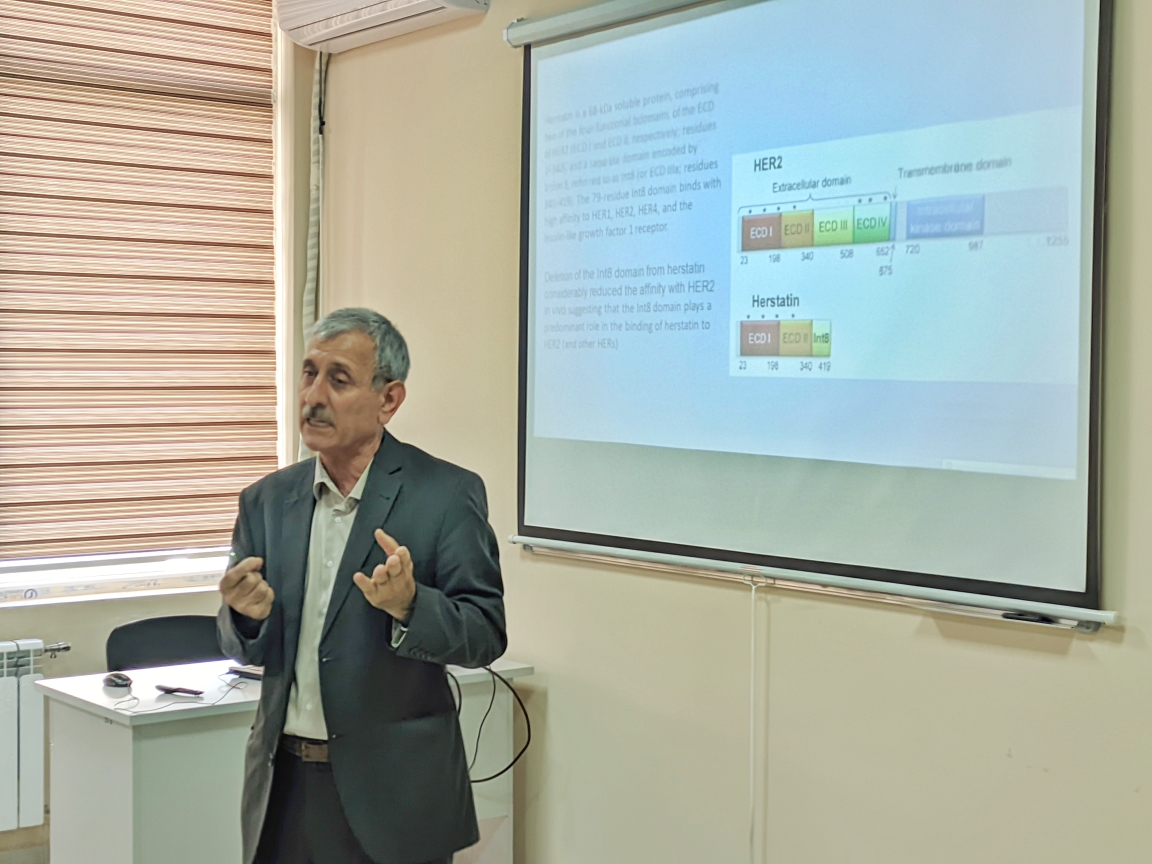
On May 23, 2024 at 15:00 at the Institute of Biophysics of the Ministry of Science and Education of the Republic of Azerbaijan, a scientific seminar on "Search for conservative HER2 motifs - epitope design for therapeutically important humanized monoclonal antibodies" was held.
The seminar was opened by the executive director of the institute, Ph.D. Karim Gasimov opened and greeted the event participants, gave general information about the topic of the seminar, research directions, and then made a presentation on the topic.
Karim Gasimov, EGFR (HER1) and HER2 domains (analyzed by EMBL-EBI's InterPro online program), formation of homodimers and heterodimers with ErbB representatives, common mutations for HER2, HER2 ECD structures and its monoclonal antiism (pharmacologically relevant) Pertuzumab and complexes with Trastuzumab, analysis of HER2 domains and their functional motifs, splice variants of HER2, Receptor Tyrosine Kinase Families, HER2-related signaling pathways. reported that overexpression of human epidermal growth factor receptor 2 (HER2) correlates with tumor aggressiveness and poor prognosis in breast (as well as lung) cancer. With the availability of therapeutic antibodies against HER2, great advances have been made in the clinical management of HER2-positive breast cancer. However, de nova and acquired resistance to these antibodies face a serious limitation for successful HER2-targeted therapy. The identification of new epitopes of HER2 that can be used for functional and site-specific blockade may be a central step in the development of new clinically relevant anti-HER2 antibodies. Evolutionarily conserved motifs of the extracellular domain of HER2 (ECD HER2) contain potentially therapeutically important epitopes/targets.
Given that structural and functional conservative fingerprints and linear motifs can provide functionally specific configurations, it is suggested that additional medicinally important epitopes/targets may be identified in the ECD domain of the HER2 protein, which may allow modifications for potential therapeutic application.
After listening to the report, the participants of the seminar spoke and expressed their questions and opinions on the topic.